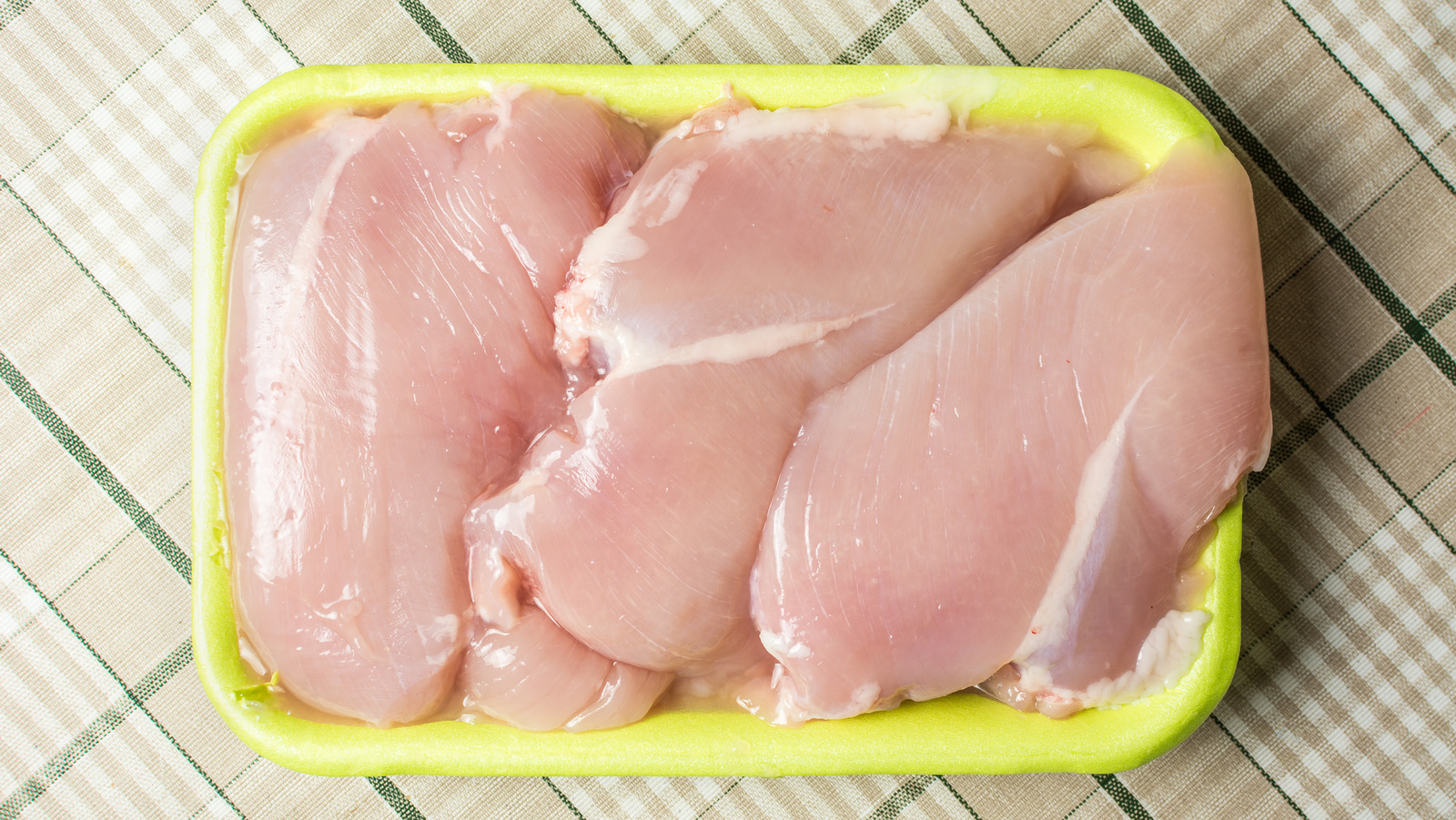If you’ve ever seen white lines or a slimy, sticky substance on raw chicken breasts, you’re not the only one. Many home cooks and customers have also seen these strange textures and wondered what’s going on.
As it turns out, the white stuff on chicken breasts is usually harmless and caused by natural physiological processes. However, it can indicate lower quality meat and impact the taste and texture when cooking. Let’s break down the likely causes, implications, and answers to common questions about the white stuff on chicken breasts.
Understanding the White Stuff
Upon first glance, the white striations and mucus-like ooze on raw chicken breast can appear unsettling. However, in most cases, it is merely:
-
Exuded protein – This white, sticky substance is primarily made up of sarcoplasmic proteins like creatine kinase and lactate dehydrogenase. It leaks out from muscle fibers damaged during processing.
-
Signs of muscle abnormalities – Distinct white bands parallel to muscle fibers may indicate white striping Irregular firmness and paleness could signal woody breast Both conditions stem from selective breeding and fast growth.
Even though the reasons behind the problems may be scary, research shows that the white stuff itself is not harmful to eat. But it does mean the meat isn’t as good in terms of texture, moisture, and taste.
Causes of the White Stuff
To understand what’s behind the white goo and stringy layers in chicken breasts, we need to explore the two main underlying issues:
Muscle Myopathies
-
Woody breast – Extremely firm and rubbery raw meat. Caused by malformed muscle fibers and increased collagen. Leads to poor water holding.
-
White striping – White striations parallel to muscle fibers. Indicates connective tissue growth. Linked to lower protein.
Both conditions are linked to breeding broilers to get bigger breast muscles faster. They are not harmful in and of themselves, but they do change the proteins and moisture levels.
Protein Exudate
- Primarily composed of leaked sarcoplasmic proteins like creatine kinase.
- Exudes from damaged muscle fibers unable to hold moisture.
- More prevalent in breasts with woody breast.
- Can appear as white ooze, mucus, or stringy bits.
While unappetizing visually, the exudate itself is harmless when cooked. However, its presence indicates compromised muscle quality.
Impacts on Nutrition and Cooking
According to studies, chicken breasts with woody breast or white striping may have:
- Slightly lower protein content
- Slightly higher fat and collagen content
- Impaired ability to hold moisture during cooking
- Overall lower water content
This can lead to drier, tougher meat when cooked. The flavor may also suffer.
Slow, moist cooking methods like braising, stewing, or poaching can help mitigate texture issues. A marinade also adds moisture. But ultimately, the quality is lower than chicken without these muscle conditions.
Frequently Asked Questions
Is it safe to eat the white stuff?
Yes, the white residue itself is harmless when fully cooked. Both the USDA and FDA deem affected meat safe for consumption.
Does it mean the chicken is bad?
Not necessarily. While the meat quality is lower, it’s not spoiled or rotten. Proper handling and cooking can reduce adverse effects.
Can I prevent woody breast when buying chicken?
It’s difficult to fully prevent, but you can try:
- Inspecting raw chicken for irregular firmness and white bands
- Opting for smaller, air-chilled chicken breasts
- Choosing organic or sustainable brands
Should I remove the white stuff before cooking chicken?
You can trim off visible residue or blot with paper towels. But it’s not imperative. Thorough cooking to 165°F kills any bacteria.
Does freezing chicken make the white stuff worse?
Freezing can damage muscle fibers, causing more protein to exude upon thawing. So yes, freezing may accentuate white residue.
Are chicken producers doing anything to address this?
Many poultry companies are actively researching solutions like:
- Breeding programs to select birds less prone to myopathies
- Optimized feeding regimens and living conditions
- Processing modifications to reduce damage
The Takeaway
Seeing white ooze, mucus, or stringy bits on raw chicken breasts can be off-putting. However, it is primarily harmless protein and moisture that has leached from muscles impacted by myopathies. These conditions stem from selective breeding and fast growth rates.
While not dangerous, the white stuff does indicate slightly lower nutritional value and poorer texture in affected meat. Proper handling and slow-cooking methods can improve quality. Overall, consumer awareness and continued industry innovation will help find the best solutions.
So take a deep breath, keep cooking, and embrace the white stuff as a natural, if not particularly appetizing, part of enjoying chicken breasts. With the right techniques, you can still end up with a tasty and safely cooked dinner.

So Wait, Is It Safe to Eat Chicken Tendons?
Tendons can be slimy and slippery in raw chicken and they don’t look incredibly appetizing. Tendons can also be chewy and rubbery when cooked. But as unappealing as that sounds, you can still eat them without any issues.
“While they can be chewy and unpleasant to eat, it is safe to consume them!” says Melanie Marcus, MA, RD is a culinary-trained registered dietitian from the greater Charlotte, North Carolina area.
